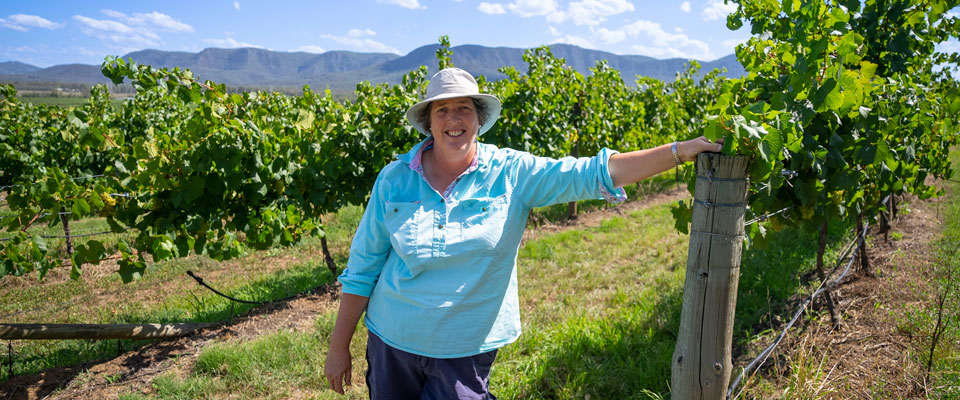How to Grow Grapevines at Home
Whether you’re looking to create a feature piece in your garden, or looking to start planting your own vineyard, there’s a few easy steps to growing grapevines at home. Our award-winning viticulturist, Liz Riley, gives you some top tips and explains how to grow your own grapevines at home. It may not be as hard as you think.
Where is the best place to plant your grapevines?
You need a spot which has good sunlight exposure and airflow, with space for your vine to be supported. This may be against a fence, over a pergola or on a dedicated trellis. There needs to be ample soil for the vine to grow in, ideally in the ground not a pot which will limit the root system of the vines. You will also need access to water to support your vine in dry periods.
What are the best grapes to grow at home?
We’d be lying if we did not tell you we’re always in favour of planting our favourite grape varietal, Chardonnay! But in all seriousness, it very much depends on where you are located.
Table grapes are the usual preference for the home garden, with seedless varieties such as sultana always being a winner, with juicy muscats also being delicious.
What is the best time of year to plant your vines?
Winter is ideal for embarking on a DIY vine project in your backyard. This is a period where the grapes are dormant, so it is the perfect time to buy one (or more) from your local nursery or garden centre. Just like a good wine, your vines will flourish with time and care – so remember you’ll need to be patient. You’ll get one or two new shoots to begin with and they’ll become the structure of your vine to work with. It won’t be long before you’ll be ready to start training your vine along a trellis, pergola, or fence, to suit your space.
Training the vine for future fruits
As your vine grows, you may want to protect the fragile vine trunk from pests like rabbits or whatever pests you get in your garden. In this phase, your aim is to establish two 'arms' or 'cordons' reaching out from either side of the trunk with the height of the cordons depending on if you are using a low trellis or up high on a pergola. These arms will bear the fruits of your labour – bunches of grapes. Throughout this growth period, you'll also observe lateral shoots springing out from the main trunk. It's crucial to remove these to maintain a straight trunk.
The joy of growing a vine at home is the possibility of creativity - you could train your vine over a pergola or let it grow upwards and outwards as you desire. In the summer, your vine could provide shade overhead while you drink a glass of Yellow Label Chardonnay beneath.

Getting prepared to summer prune
While you might be tempted to prune excess foliage initially, don’t be too hasty, as the vines needs leaves to make carbohydrates and fuel growth. Just pop out the unwanted laterals and retain the leaves.
Once established, a light summer prune will encourage more growth and airflow through the vine. When winter comes around again and the vine is dormant, it’s time for a hard prune to create structure and to prepare the vine for a fruitful harvest.
Keep it local: Source from your local nursery
Whether you dream of growing table grapes, producing homemade sultanas or harvesting your own Chardonnay, the journey starts at your local nursery. For maintaining biosecurity, it is essential that you buy vines locally to not spread any unwanted pests or diseases. Do your bit to protect our wine industry by not bringing vines in from other regions or places.
Give it a go. It’s easier than you think, and even if you want to leave the winemaking to us, grapevines make a beautiful feature in gardens big and small. Cheers.
Learn more about our award-winning viticulturist, Liz Riley here.
